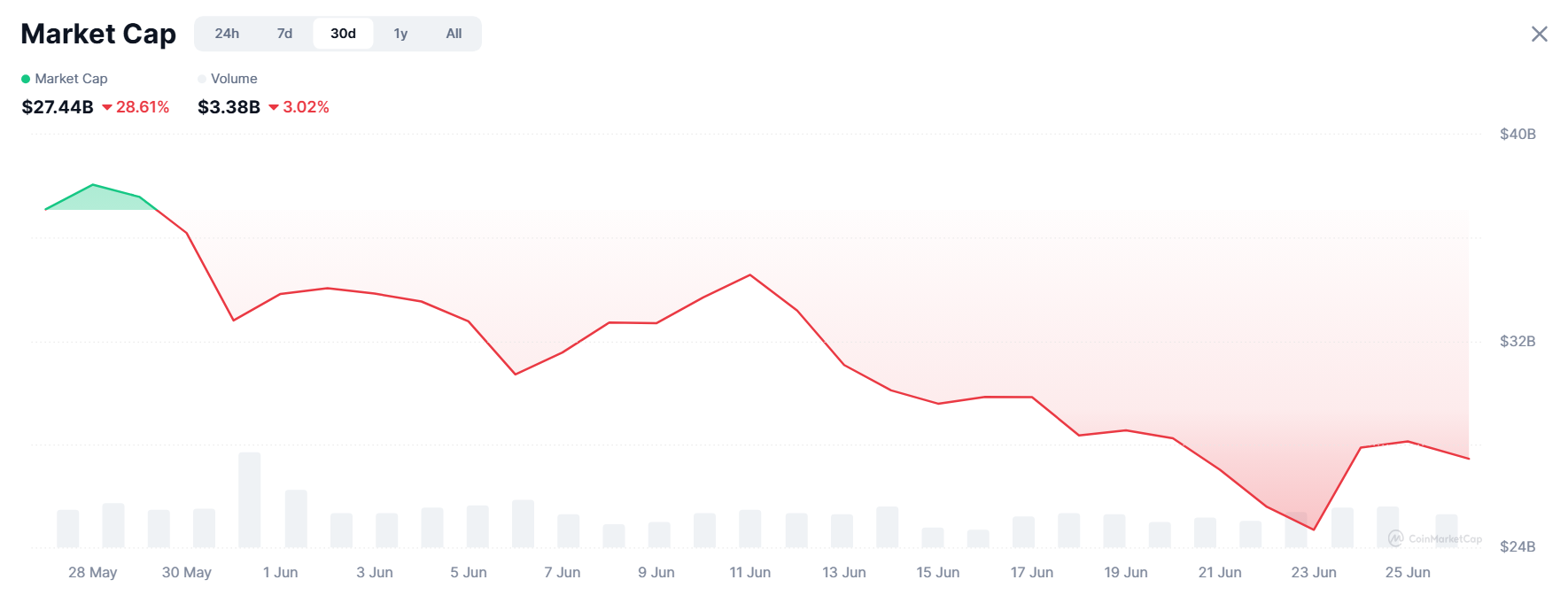🚀 NVDA Soars to Record Highs While AI Tokens Crumble—Is the Crypto Correlation Dead?
Nvidia’s stock just blasted past another all-time high—meanwhile, AI-linked cryptocurrencies are tanking. What gives?
### The Great Decoupling: NVDA’s Rally vs. Crypto’s AI Flop
While NVDA shareholders pop champagne, crypto traders are left scratching their heads. The once-tight correlation between Nvidia’s performance and AI tokens? Gone like a meme coin’s liquidity.
### Paper Gains vs. Chain Pain
Traditional markets cheer NVDA’s dominance in AI hardware. But on-chain? AI projects are getting rekt—turns out, silicon supremacy doesn’t magically fix vaporware roadmaps.
### Cynical Take: Maybe Crypto Never Needed Fundamentals Anyway
Let’s be real—when did crypto traders ever care about earnings reports? The ‘NVDA effect’ was always just another narrative to pump bags. Back to good old-fashioned speculation.
Nvidia Becomes the World’s Most Valuable Company—But AI Tokens Struggle
On June 26, NVDA stock surpassed $154, breaking past its previous peak at the end of 2024 and setting a new all-time high.
According to data from CompaniesMarketCap, NVDA’s market capitalization has exceeded $3.7 trillion. This surge is fueled by the persistent demand for graphics processing units (GPUs), essential for AI applications. As a result, Nvidia now ranks as the most valuable company globally, second only to gold in total market value.

In the past month, NVDA shares have climbed over 13.5%. In contrast, the AI token market—comprising cryptocurrencies tied to blockchain-based AI projects—has dropped more than 28% during the same period, according to CoinMarketCap.

This sharp divergence casts doubt on the assumed connection between NVDA’s performance and the price movements of AI tokens. While a previous BeInCrypto report noted a weak correlation, recent developments suggest it may now be nearly nonexistent.
Historically, NVDA stock performance has often served as a bellwether for AI-related assets, including crypto tokens. Nvidia GPUs are crucial in training AI models, and the company’s earnings reports have previously triggered parallel movements in AI token prices.
For instance, in March, AI tokens surged with double-digit gains ahead of Nvidia’s Q4 earnings. By May, however, despite Nvidia reporting a 69% year-over-year increase in Q1 revenue, the AI token sector posted only a modest 0.6% gain.
This trend points to a gradual and noticeable weakening in the correlation between the two asset classes. The so-called “NVDA effect” on AI crypto appears to have faded.
AI Crypto Predictions Fail to Materialize
Analysts have identified several factors behind this divergence. Chief among them is the speculative nature of many AI crypto projects.
James Ross, founder of Mode Network, predicted in October 2024 that AI agents WOULD account for over 80% of blockchain transactions within six to twelve months. Eight months later, this vision remains unfulfilled. Many AI agent projects have yet to demonstrate real-world utility.
Former Binance CEO Changpeng Zhao also weighed in during March 2025. He emphasized practical use over token creation:
“While crypto is the currency for AI, not every agent needs its own token… Launch a coin only if you have scale. Focus on utility, not tokens,” CZ said.
This sentiment reflects a broader shift toward fundamentals. Investors are now gravitating toward projects like Bittensor, NEAR, and Filecoin—platforms that offer practical applications such as decentralized AI model training, blockchain infrastructure, and decentralized storage.
The decoupling of NVDA and AI tokens may signal a maturing market. While NVDA continues to benefit from concrete demand for AI hardware, AI-related tokens must prove their real-world value to regain investor confidence.

